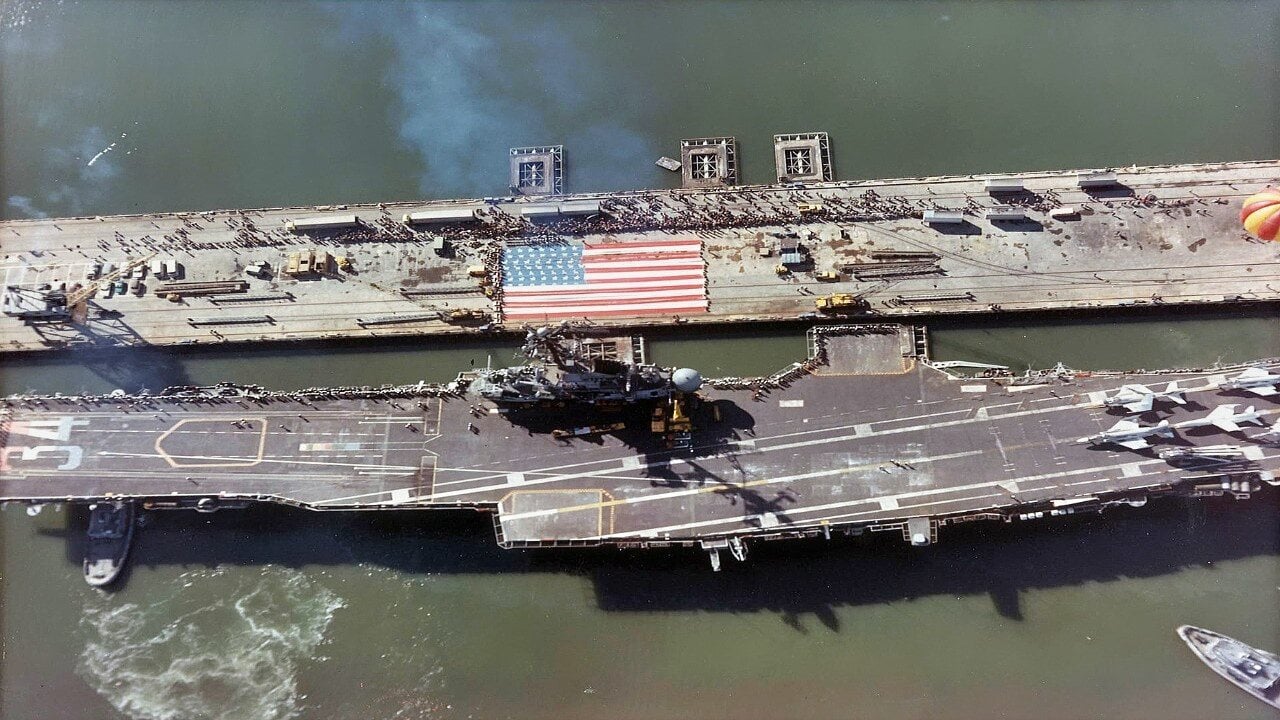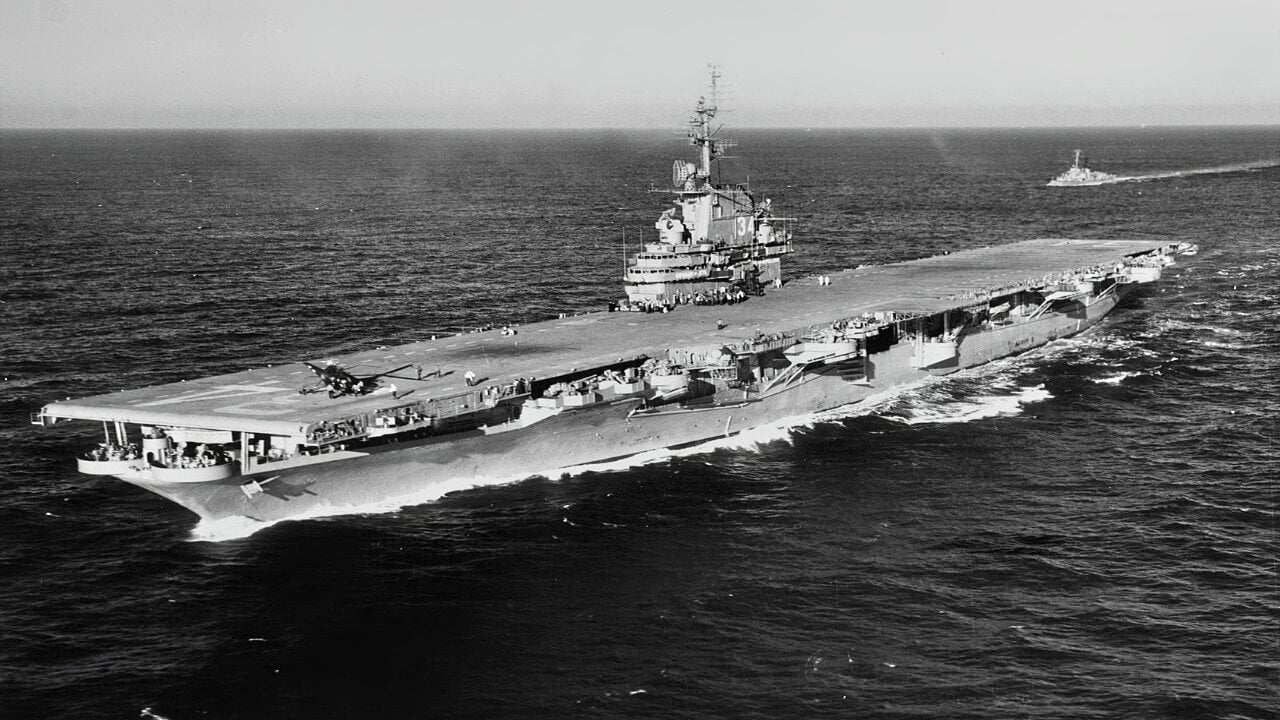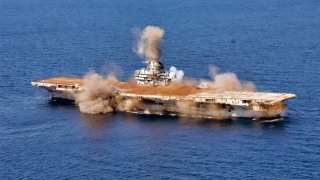The U.S. Navy Sunk Its Very Own Aircraft Carrier
The USS Oriskany, a retired Essex-class aircraft carrier, now rests off Florida’s coast as the world’s largest artificial reef. Sunk in 2006, the “Great Carrier Reef” has since attracted diverse marine life and bolstered local tourism.
What You Need to Know: The USS Oriskany, a retired Essex-class aircraft carrier, now rests off Florida’s coast as the world’s largest artificial reef. Sunk in 2006, the “Great Carrier Reef” has since attracted diverse marine life and bolstered local tourism.

-Artificial reefs, a practice dating back to antiquity, are created by sinking vessels and other cleaned, environmentally safe structures to foster marine habitats. Florida alone has over 60 artificial reefs, while similar projects worldwide, including decommissioned subway cars, enhance ecosystems.
-However, some efforts, like Florida’s 1970s tire reef, backfired, underscoring the need for eco-conscious reef planning.
USS Oriskany: The Giant WWII Carrier Now Thriving as an Artificial Reef
Off the coast of Florida sits the "Great Carrier Reef," a former World War II aircraft carrier that was sunk to become an artificial reef. Though the largest such reef created to date, this is just one of numerous vessels that were given a second life under the sea.
Meet the USS Oriskany
The last Essex-class aircraft carrier constructed for the U.S. Navy, USS Oriskany (CV/CVA-34), arrived too late to see service during the Second World War.
Nevertheless, she had a successful career. The vessel was awarded the Navy Unit Commendation on three occasions and the Meritorious Unit Commendation three times. She earned the Korean Service Medal and two Battle Stars, and the Vietnam Service Medal with 10 Battle Stars.
For nearly two decades now, the vessel has enjoyed an active retirement as an artificial reef.
It was determined in the 1980s that it would be too expensive to modernize the vessel. At the end of the Cold War, her hull was stripped of all equipment that could be reused or recycled. In 2004, she was transferred to the State of Florida for use as an artificial reef. The Navy had awarded a contract to Resolve Marine Group/ESCO Marine Joint Venture a year earlier for the environmental remediation work necessary.
"Since the sinking of the Oriskany, at least thirty-eight fish species have been seen around the wreck. Additionally, Pensacola and Escambia County generated more than $4 million from the addition of the artificial reef in 2007 alone. This number is likely much, much higher today," Maya Carlin wrote.

The carrier isn't alone, and today the Florida Keys National Marine Sanctuary is home to 61 artificial reefs.
"The purpose of creating an artificial reef is to enhance aquatic habitat for the benefit of marine resources and to provide additional options for conserving, managing and/or developing fisheries resources. Appropriate vessel clean-up and remediation together with strategic reef site (location) selection will maximize the opportunity for converted vessels to provide benefits to the environment as artificial reefs," the Environmental Protection Agency explained.
History of Artificial Reefs
Sunk in May 2006, USS Oriskany has become a popular location for divers.
The practice of sinking warships to turn them into reefs actually dates back to antiquity. Early warships that had been sunk in shallow waters as wartime traps were found to have "fish-attracting powers."
Over the centuries that followed, old vessels and other "junk" were ditched into the sea to become fishing hotspots.
"You can find unsanctioned artificial reefs made out of busted fridges, wheel-less shopping carts or the frames of old cars teeming with red snapper, butterflyfish and stony corals," the Smithsonian's National Museum of Natural History explained.
However, efforts have been made to create artificial reefs in more environmentally friendly ways than just dumping trash into the sea. "More than 2,500 decommissioned New York City subway cars sit off the shores of Georgia, South Carolina, Virginia, Maryland, Delaware and New Jersey. The cars were cleaned, hollowed out and sunk into the Atlantic as part of a reef creation program between 2001 and 2010," the Smithsonian added.
Not all the efforts to dump old stuff in the sea have succeeded.
In addition to an old aircraft carrier, "Florida sank 1 million to 2 million tires offshore in the 1970s in an effort to create artificial reefs, but sea life didn’t colonize them as intended. Now the tires are washing around and smothering coral," The Conversation reported, highlighting how there can be unintended consequences.
Warships as Reefs
USS Oriskany is the largest military vessel to be purposely sunk for use as a reef, but it is just one of many retired World War II vessels to meet such a fate.
A dozen Liberty Ships – built to carry supplies, fuel, and personnel to Europe – were intentionally sunk in the mid-1970s by the Texas Coastal and Marine Council.
"They were later transferred to Texas Parks and Wildlife and form the centerpiece of the Texas Ships-to-Reefs program," according to the Texas Parks and Wildlife Department. "The Liberty ships and one WWII tanker, the SS John Worthington, are readily accessible reef sites, clustered in five groups on the Gulf floor."
Author Experience and Expertise: Peter Suciu
Peter Suciu is a Michigan-based writer. He has contributed to more than four dozen magazines, newspapers, and websites with over 3,200 published pieces over a twenty-year career in journalism. He regularly writes about military hardware, firearms history, cybersecurity, politics, and international affairs. Peter is also a Contributing Writer for Forbes and Clearance Jobs. You can follow him on Twitter: @PeterSuciu. You can email the author: [email protected].
Image Credit: Creative Commons.


